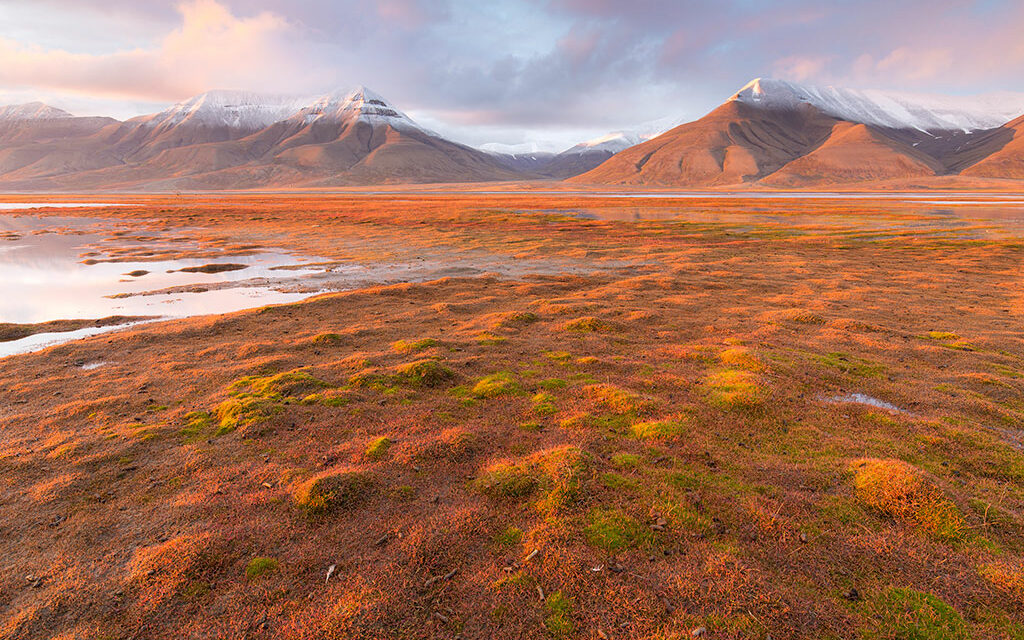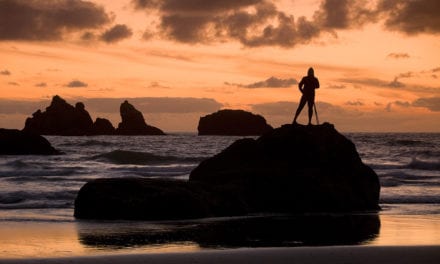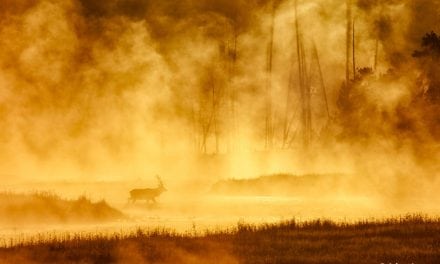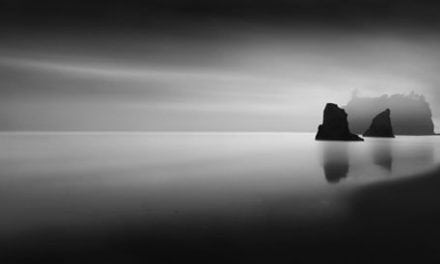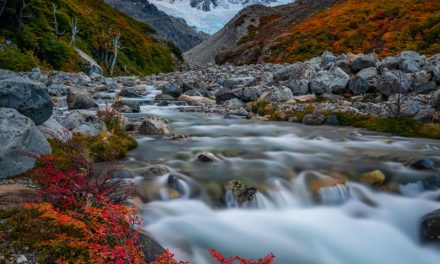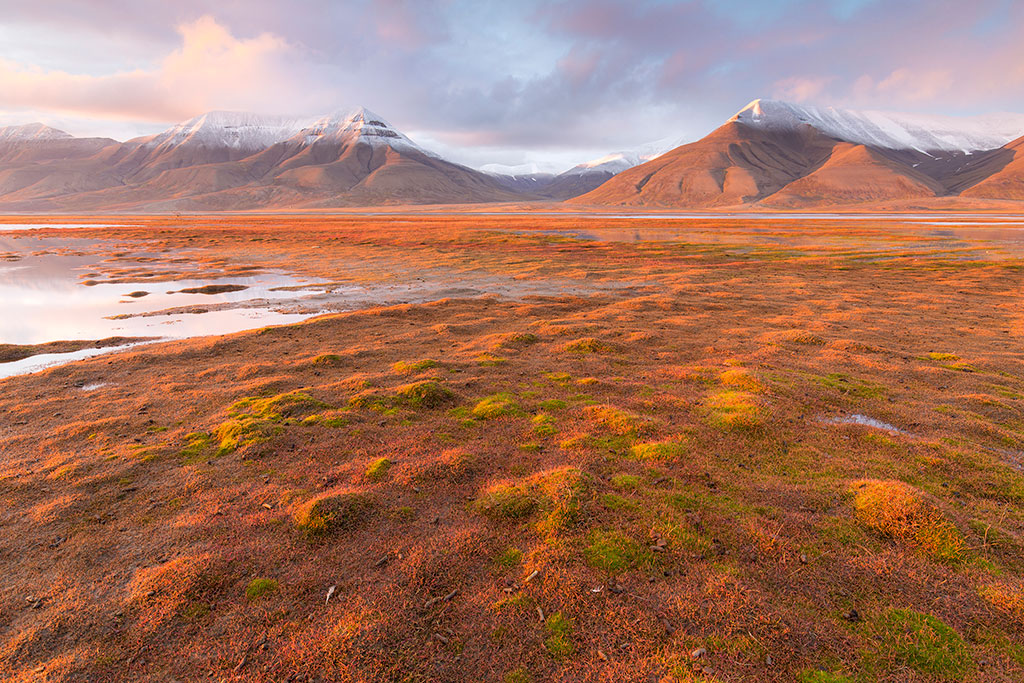
Shot with a Canon EOS 5D Mark III, Canon EF 16-35mm f/4L IS USM at 20mm, LEE 100mm 2-stop graduated neutral density filter, Gitzo tripod, Induro ball head. Exposure: 0.4 sec., ƒ/11 ISO 100.
The Svalbard archipelago lies about halfway between mainland Norway and the North Pole. About the size of West Virginia with a population of only 2,500 people, Svalbard is a mostly untouched Arctic wilderness of mountains, valleys, glaciers and fjords.
The main settlement of Longyearbyen can be reached by a three-hour flight from Oslo, and accommodations here include hotels, guesthouses and camping. A short walk along the main road leading out of town into Advent Valley will bring you this view of Hjortfjellet—the mountain just left of center—across the valley. You don’t have to go far to find beautiful nature here.
Weather In Svalbard
Svalbard experiences particularly unique seasons. Owing to its proximity to the top of the planet, there are periods of permanent darkness in the winter and periods of permanent daytime in the summer. Mid-October to mid-February is the polar night period where you can expect temperatures as low as -4 degrees Fahrenheit. The ground is typically snow covered from November until May.
April to August brings the midnight sun. Temperatures peak in July at an average of 44 degrees Fahrenheit. The glacial valleys and lack of trees mean it’s often windy and feels colder than it is. The short shoulder seasons in between are a nature photographer’s dream with seemingly ever-lasting sunsets.
Photo Experience
I’m fortunate enough to be able to look at these mountains from my house every day. Hjortfjellet is an iconic presence, and you can see it from everywhere in Longyearbyen. I must have thousands of photos of it. This was a memorable one for me, though, because the conditions rarely come together so perfectly. An early snowfall on the peaks combined with a sunset that seemed to set the tundra on fire was a special opportunity. I was at home as the sun started to come through the clouds. I just grabbed my camera bag and ran down to the valley. The light only lasted for about 20 minutes, but luckily, it was long enough for me to get this shot.
Best Times To Visit Svalbard
Flights to Longyearbyen run year-round. All times of year offer good photographic opportunities in Svalbard. The dark season is the most restrictive because there are fewer options to get out in nature, but you may be rewarded by the northern lights. The light winter months offer the chance for stunning winter landscapes and exploration via snowmobile.
In the summer months, it’s possible to see a lot more of the archipelago via boat, and there’s more wildlife about. My favorite times are the winter and autumn sunset periods: mid-February to mid-April and mid-August to mid-October. You can be looking at sunsets that last for hours during these times of year. One important thing to remember is that polar bears can be encountered in the wild here, and you need to be armed with a rifle when leaving the settlement. Arranging a trip with one of the many local tour companies is your best bet.
Contact: Visit Svalbard, en.visitsvalbard.com.
See more of Stuart Thomson’s work at stuartthomson.no.
The post Why You Should Visit Svalbard In Norway For Photography appeared first on Outdoor Photographer.

